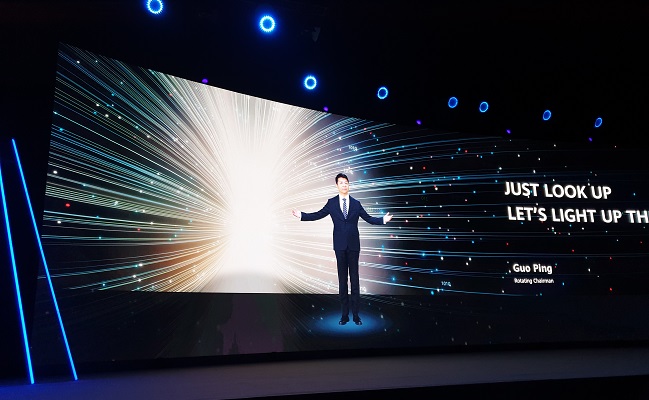Pandemic slowdown won’t stop its growth, says Huawei chairman
IT was a call to action at the MWC Barcelona 2022, when Huawei’s Rotating Chairman Guo Ping declared how technology continued to proliferate, improve and innovate even amidst the slowdown caused by the pandemic. He called on all technology enterprises, big and small to rise above politics and look at broader picture of the development of the global digital economy.
Guo also emphasized how Huawei would continue its globalization strategy, increasing its strategic investments into two major sources of both challenge and opportunity: digitalization and carbon neutrality. He added that 5G is the foundational technology that can convert the challenges into opportunities.
In the keynote speech “Just Look Up, Let’s Light Up the Future,” which he delivered online, he focused on these challenges and said Huawei aims to reshape the fundamental theories, architecture, and software that underpin its industry, increase its mid- to long-term competitiveness, and ensure the longer-term sustainability of the ICT industry, fully committing to supporting customers who select to do business with them, despite the restrictions of the political atmosphere in some countries.
Guo mentioned how existing theories and architectures are unable to support the explosive growth in digital demand. He encouraged the technology industry to explore new theories and architectures to achieve digital sustainability by disrupting the technological paradigm.
Forecasts show that over 50 percent of global GDP will be digitalized by 2022 and the demand for digital products and services has already exceeded expectations.
“Connectivity density and computing power determine the strength of the digital economy, but it should also maintain long-term vitality. So, we need to consider a new dimension, carbon reduction,” Guo said speaking about carbon neutrality.
Huawei currently adheres what it calls the “More Bits, Less Watts” strategy. In addition to improving its fundamental digital capabilities, it has committed to making its products 2.7 times more energy efficient by making breakthroughs in areas like theories, materials, and algorithms.
Through advances like these, the tech company hopes the ICT industry can help other industries reduce their own carbon footprints, which are 10 times larger than the carbon footprint of the ICT industry itself.
Huawei’s increasing strategic investment fundamental theories, architecture, and software will gradually be reflected in the competitiveness of the company’s products, which they hope will support the long-term and sustainable development of both the company and the ICT industry as a whole.
By exploring new theories and technologies, like next-generation MIMO and wireless AI, Huawei is able to push its technologies ever closer to Shannon’s Limit. At the same time, its research into new theories like semantic communications will provide the industry with guidance on new fundamental theories.
The Shannon limit refers to the maximum rate of error-free data that can theoretically be transferred over a channel if the link is subject to random data transmission errors, for a particular noise level. Even the most modern methods of data transmission fall victim to low transmission faults, therefore, not maximizing capacities, especially with the availability of 5G.
Huawei is also developing exciting new architectures and is currently integrating photonic and electronic technologies and designing peer-to-peer architectures to solve technological challenges or technique bottlenecks.
In terms of software, it is building AI-centered, full-stack software and a new software ecosystem to meet the drastically rising demand for computing capacity caused by explosive growth of AI.
Guo finally explained that great user experience comes from software-hardware synergies. He used two examples to show how Huawei applies this concept to ICT product development and technological innovation for network evolution. First, optimized algorithms for AHR Turbos are helping MetaAAUs (Active Antenna Unit) that will consume less energy and improve performance. Second, algorithm breakthroughs in holographic optics have enabled OXCs to achieve one-hop connections.
For more than years, network evolution has been a process of introducing the latest IT practices to communications technologies, ranging from IP, to Cloud, and then to AI. As the company “with the most complete suite of ICT capabilities” in the digital industry, Guo said that Huawei is confident it will be able to gain a head start in the evolution towards future AI-native networks.
“Huawei will continue its globalization strategy, in standards, talent, supply chain, and more. Huawei is committed to helping customers who choose it to achieve the greatest business success,” Guo said at the close of his speech at the MWC22 Barcelona that ended last March 3.





